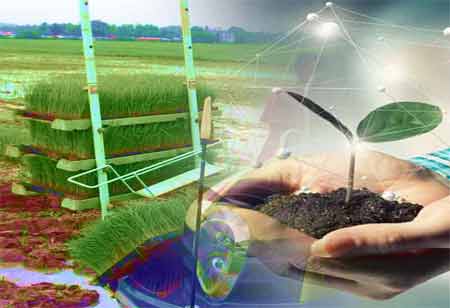Thank you for Subscribing to Agri Business Review Weekly Brief
Latest Trends in GreenHouse Technology
The advent of greenhouse technology has made food production more efficient and sustainable for farmers and gardeners.

By
Agri Business Review | Monday, September 04, 2023
Stay ahead of the industry with exclusive feature stories on the top companies, expert insights and the latest news delivered straight to your inbox. Subscribe today.
Greenhouse technology is critical in creating hospitable habitats for out-of-season crops and contributes to a more sustainable and reliable food supply for the planet's growing populations.
FREMONT, CA: The advent of greenhouse technology has made food production more efficient and sustainable for farmers and gardeners. Trends in greenhouse growth have evolved significantly over time, driven by the need to meet the demands of a growing global population and address environmental challenges. From traditional low-tech tunnel and hoop houses to cutting-edge vertical farming and hydroponic greenhouses, growers are continually integrating best practices and technological advancements to create optimal conditions for plant growth. The most significant advantage of greenhouse agriculture is its increased control over crop cultivation.
Greenhouses shield plants from adverse weather events like hail, snow, extreme heat, and intense sunlight, providing a stable and secure environment for crop growth. Consistency in crop yields is of paramount importance for sustainable food production. Traditional greenhouse crops like lettuce, cucumbers, sweet peppers, and tomatoes particularly benefit from the enhanced control that modern greenhouses offer. The ability to micromanage crops allows farmers to achieve higher success rates, even during less-than-ideal growing seasons. Seasonal produce is grown with increased assurance using greenhouse technology, leading to more stable and reliable food supplies on a global scale.
Farmers can prevent insect infestations from reducing yields by isolating their crops inside greenhouse structures. Greenhouses minimize the risk of cross-pollination from genetically modified plants in neighboring fields, preserving the cultivated crops' integrity. Precise control over irrigation is another crucial aspect of greenhouse technology, enabling growers to optimize water usage and conserve this precious resource, which is essential in water-scarce regions. Greenhouse environments allow for reducing or eliminating harmful pesticides, promoting organic farming practices, and ensuring healthier produce for consumers.
The ability of greenhouse technology creates a hospitable environment for out-of-season crops. Low failure rates are critical for large and small farms, as crop failures can have devastating economic and environmental impacts. Even within greenhouses, crops can only succeed if given the proper care and attention. Investing time and resources in greenhouse management is essential before adopting the technology. With advancements in greenhouse management technology, farmers can significantly reduce the risk of crop failure, making greenhouse agriculture a valuable and reliable tool for food production.
Greenhouse technology allows consumers to access high-quality fruits and vegetables year-round, reducing the need for importing produce and promoting sustainable local food production. While establishing greenhouses may require initial investments, successful management can increase revenue from crops grown out of season. Out-of-season crops often fetch higher prices in the market, mainly when locally grown and sold at farmers' markets. Integrating more efficient and sustainable greenhouse practices will influence how raw produce is shipped, distributed, and purchased in the future.





